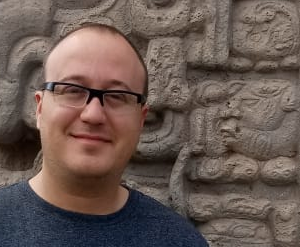
My name is Javier Mejuto, at the moment I chair the Archeoastronomy and Cultural Astronomy Department at the Space Sciences Faculty, National Autonomous University of Honduras. I am member of the Culturally Sensitive Sites Committee as part of my service in the IAU (International Astronomical Union), where I am Co-chairing the Inter-Commission C1-C2-C3-C4 WG Astronomy in Culture (WGAC).
From the beginning of this initiative, I was interested in being part of it since it is a high-impact subject, which crosses many social aspects and reflects some of the most shared problems suffered by Native Peoples around the globe: the defense of their ancestral territories. The use and appropriation of common spaces, public spaces or, as in this case, indigenous lands, are so frequent nowadays that we can even fall into their normalization and justification. For this, there are many reasons that are adduced, perhaps the most frequent are the development or the search for a clear and ‘universal’ good. Science and, therefore, Astronomy do not escape from these typically extractivist, imperialist and capitalist criteria. Behind these justifications hides a profound lack of appreciation and knowledge of the First Peoples’ cultures, knowledge systems and, in relation to our committee, ancestral knowledge about the sky.
Conflicts related to cosmovisions and astronomical knowledge systems are as common and flagrant as they are in other aspects of the defense of the rights and resources of Indigenous territories. According to data from Global Witness, in 2019 a historical record of murdered environmentalists was reached, with 148 of the 212 homicides occurring in Latin America, and Honduras being the country with the highest number of cases per capita. Therefore, it is not strange to think that beyond the mining, agricultural, water and wood resources, many have turned their eyes to the celestial space inside and outside our planet.
In relation to the purely astronomical, understood from the Western concept of the term, the most mediatic case (perhaps also because it happened in US territory) is that of the public conflict in 2018 over building the Thirty Meter Telescope (TMT) on Mauna Kea, Hawaii’i and the Kānaka Maoli people. Although the defense discourse of the megaproject has been the traditional one to defend multinational corporations’ projects, in this case what caught the attention was that the project was astronomical. The project based its viability on purely practical and technical astronomical aspects such as the quality of the sky, the absence of large nearby towns, etc. The problem was that the construction of TMT would negatively impact and interfere with the cultural and religious practices of Kānaka Maoli, beyond this it would have a catastrophic impact on the conception of the universe of the members of this original people, quite possibly ending with this culture. We can see examples like these, in places as far away from the American continent as the Tibetan Plateau, where Chinese astronomers propose the construction of a complex of observatories arguing for perfect observing conditions in this area. Again, historical, cultural and ethnic aspects are not being taken into account (in this case with a high degree of political instability in the area).
As previously mentioned, this problem is no longer limited to the planet and has already escalated to outer space. Megaprojects such as Starlink from the company SpaceX are drastically modifying the night sky visible to the naked eye. Any moderately experienced observer can observe trains of satellites during any observation of the night sky. They will only observe a small number of the 2,000 satellites already launched out of the 4,408 planned in a first phase and of the 30,000 satellites in a later phase. If it is obvious to stargazers, for the majority of native peoples who have a dialogical relationship with the celestial space as their worldviews are rooted in the direct observation of the night sky, it implies, again as in the Hawaiian case, the prompt and inexorable disappearance. As we mentioned at the beginning, motivated by the appropriation by a few companies of a human and global space. The problem is so obvious and of such magnitude that, recently, the IAU Center for the Protection of the Dark and Quiet Sky from Satellite Constellation Interference has been created with which our committee will work closely to help defend the rights of Indigenous peoples worldwide.
Many of these problems and conflicts are easily avoidable with an intercultural education with cultural competencies, and within the scope of our committee, for astronomical science professionals from their earliest stages of training.